Dental emergencies don’t follow business hours. Whether it’s a knocked-out tooth during a weekend hike, a severe toothache at midnight, or sudden swelling in your jaw, knowing how to respond can mean the difference between saving a tooth and permanent damage.
At Family Dental Missoula, we’ve seen how prompt and informed action can minimize pain, prevent complications, and even save lives. In this article, we’ll walk you through the most common dental emergencies, how to handle them, and—most importantly—when you should see a dentist for a dental emergency.
What Is a Dental Emergency?
A dental emergency is any oral health problem requiring immediate attention to stop bleeding, alleviate severe pain, treat infection, or save a damaged tooth. While some issues may seem minor, others can escalate rapidly if left untreated.
According to a report published in the Journal of the American Dental Association (JADA), 1 in 6 Americans experiences a dental emergency annually. Many of these patients delay care due to uncertainty or cost, which can lead to worsened outcomes.
When Should I See a Dentist for a Dental Emergency?
Many patients ask, “When should I see a dentist for a dental emergency?” The answer is simple—if you’re in significant pain, bleeding, or at risk of losing a tooth, you should contact your dentist immediately.
Urgent Signs Include:
- Severe toothache or pressure
- Knocked-out (avulsed) tooth
- Cracked or fractured teeth
- Soft tissue injuries (lips, gums, tongue) with bleeding
- Abscess or swelling in the face/jaw
- Lost filling or crown with accompanying pain
- An object lodged between teeth that can’t be removed
Call Family Dental Missoula immediately if you’re experiencing any of these symptoms. We prioritize dental emergencies and offer same-day appointments whenever possible.
Common Types of Dental Emergencies (and What to Do)
1. Knocked-Out Tooth (Avulsed Tooth)
A knocked-out tooth is one of the most time-sensitive dental emergencies. The American Association of Endodontists (AAE) states that teeth have the highest chance of being saved if reimplanted within 30 minutes.
What to Do:
- Handle the tooth by the crown (not the root)
- Rinse gently in water—do not scrub or use soap
- If possible, reinsert the tooth into the socket
- If not, place it in a container of milk or saliva
- Seek dental care immediately
At Family Dental Missoula, we are equipped to stabilize and reimplant teeth when patients act quickly.
2. Cracked or Fractured Tooth
A cracked tooth may not be visibly apparent, but it can cause sharp pain when chewing or sensitivity to temperature. Severe fractures that expose the pulp require immediate attention to prevent infection.
What to Do:
- Rinse your mouth with warm water
- Apply a cold compress to reduce swelling
- Avoid chewing on the affected side
- Call your dentist promptly
Depending on the severity, treatment may include bonding, a crown, or root canal therapy.
3. Severe Toothache
A toothache isn’t always a crisis, but when pain is intense, persistent, or accompanied by swelling or fever, it may indicate an abscess or advanced decay requiring urgent intervention.
What to Do:
- Rinse your mouth with warm salt water
- Use over-the-counter pain medication (e.g., ibuprofen)
- Apply a cold compress to the outside of the cheek
- Never place aspirin directly on gums or teeth
- Contact your dentist for evaluation
Toothaches are the most common reason for emergency dental visits in the U.S., affecting 12% of adults annually (CDC data).
4. Dental Abscess
An abscess is a localized infection at the root of a tooth or between the gum and the tooth. Symptoms include swelling, throbbing pain, bad breath, or a pus-filled bump on the gums.
Why It’s an Emergency:
Left untreated, an abscess can spread to other parts of the body, including the bloodstream, causing serious complications like sepsis.
What to Do:
- Rinse with a mild saltwater solution
- Do not attempt to drain the abscess at home
- Seek emergency dental treatment immediately
Abscesses often require drainage, antibiotics, and root canal treatment.
5. Lost Filling or Crown
When a filling or crown falls out, it can expose the tooth’s inner layers, making it vulnerable to damage, decay, or pain.
What to Do:
- Keep the crown if you still have it
- Apply clove oil to the exposed area for temporary relief
- Use dental cement (available at drugstores) to cover the tooth
- Avoid chewing on that side
- Schedule an urgent appointment
Re-cementing the crown or replacing the restoration is usually straightforward if caught early.
6. Bleeding Gums or Soft Tissue Injury
Bleeding after brushing may indicate gum disease, but trauma to the lips, tongue, or cheeks can cause more serious bleeding that requires emergency care.
What to Do:
- Rinse with cold water
- Apply pressure using gauze or a clean cloth
- Use a cold compress to control swelling
- If bleeding doesn’t stop in 10–15 minutes, seek help
Soft tissue injuries may require sutures or antibiotics, depending on severity.
7. Something Stuck Between Teeth
Objects stuck between teeth—like popcorn husks or bones—can cause pain and swelling if not removed safely.
What to Do:
- Gently floss around the object
- Rinse with warm salt water
- Avoid using sharp tools or tweezers
- See a dentist if the object can’t be removed
Attempting removal with improper tools may damage gums or push the object deeper.
How to Prepare for a Dental Emergency
Having a dental emergency kit on hand can help you respond quickly. Include:
- Dental floss
- Over-the-counter pain relievers
- Gauze pads
- A small container with a lid
- Salt packets (for rinsing)
- Dental wax or temporary cement
- Contact information for Family Dental Missoula
When NOT to Visit the Emergency Room
Unless your dental emergency involves facial trauma, uncontrolled bleeding, or systemic infection, it’s usually best to go directly to a dentist rather than a hospital ER.
Why?
Hospitals are typically not equipped to handle dental procedures. According to a 2020 report from the American Dental Association, more than 2 million ER visits annually are dental-related, yet most result in temporary pain relief, not definitive treatment.
Call your dentist first—especially one with same-day availability like Family Dental Missoula.
How Family Dental Missoula Handles Dental Emergencies
At Family Dental Missoula, we believe that no one should suffer through pain or uncertainty when facing a dental crisis. We offer:
- Same-day emergency appointments
- Digital imaging for fast diagnosis
- Comprehensive care from pain relief to repair
- Sedation options for anxious patients
- Transparent costs and flexible payment plans
We also provide clear post-treatment instructions and follow-up care to ensure complete recovery.
Preventing Dental Emergencies
While not all emergencies are avoidable, many stem from preventable causes like decay, gum disease, or trauma. Steps you can take include:
- Wear a mouthguard during contact sports
- Avoid chewing ice, hard candy, or non-food items
- Don’t use your teeth as tools
- Brush and floss daily
- Schedule routine cleanings and exams every 6 months
Preventive care is the best protection. The Journal of Dental Research found that patients who maintain regular cleanings have 40% fewer emergency visits than those who don’t.
Final Thoughts: Know What to Do—and When to Act
Dental emergencies can be frightening, but knowing how to respond—and where to turn—can save your smile. If you’ve ever asked, “When should I see a dentist for a dental emergency?” the answer is: as soon as symptoms appear.
Family Dental Missoula is here for you with same-day care, gentle treatment, and experienced clinicians who prioritize your comfort and safety. Don’t wait until a small problem becomes big. Save our number in your phone, and contact us immediately if you’re experiencing any signs of a dental emergency.
Sources:
- American Dental Association (ADA). “Dental Emergency Care Guidance.”
- Centers for Disease Control and Prevention (CDC). “Oral Health Data.”
- American Association of Endodontists. “Knocked Out Teeth Guide.”
- Journal of Dental Research. “Preventive Visits and Dental Emergency Trends.”
- Journal of the American Dental Association (JADA). “Trends in Emergency Dental Visits.”

